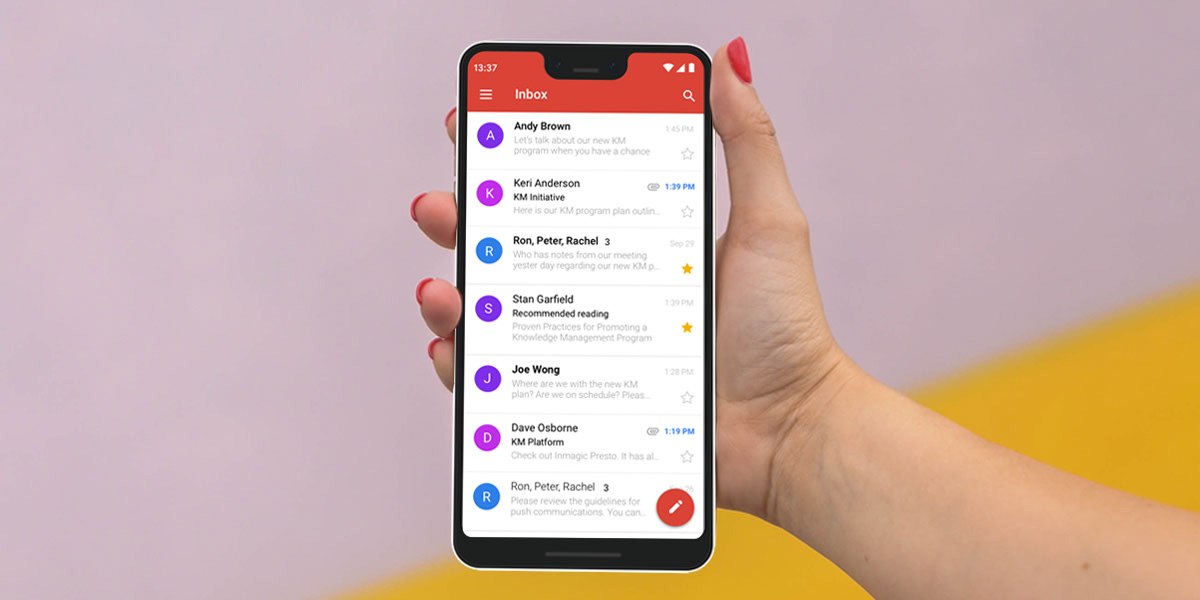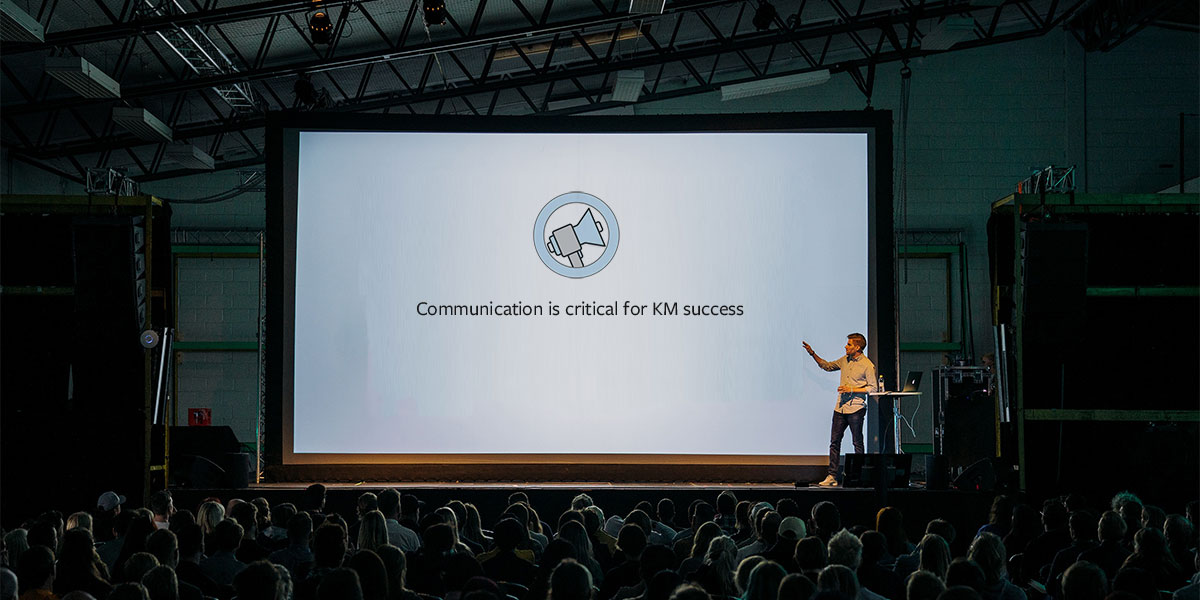Too much focus on technology when implementing a KM program is a common problem. But you will still need to use software applications, so it’s important to understand them and leverage them in an optimal way. Suggestions for doing so include finding a “killer KM app”. Please read on for my thoughts on this topic, drawn from my book, Proven Practices for Promoting a Knowledge Management Program.
We've Moved!
Think Clearly has a new home! Click here to see our latest posts.
*If there’s older content you’d like to catch up on, you can browse right where you are, until Friday, April 5th.
We know it takes a minute to get used to change!
Recent Posts
Topics: Knowledge Management, Enterprise Social Networks, Knowledge Management Software
There are many ways to nurture an organizational culture change in a knowledge-sharing environment, including embracing “Working Out Loud”. Bryce Williams defines Working Out Loud (WOL) as Observable Work (creating, modifying, and storing your work in places where others can see it, follow it, and contribute to it in process) + Narrating Your Work (writing about what you are doing in an open way for those interested to find and follow).
Topics: Knowledge Management, KM, Strategy
10 Guidelines for Leveraging Push Communication to Promote KM Initiatives
Timely communication is critical to successfully introduce and promote KM initiatives and keep the organization informed of progress. Develop a plan for the communications vehicles you will use and be sure to include “push” channels.
Topics: Knowledge Management, KM, Strategy
Selling is like a journey—there is no finish line. Remember that getting buy-in to KM is an ongoing, permanent process. You are selling all the time!
Topics: Knowledge Management, KM, Strategy
Timely communication is critical to successfully introducing a new KM initiative and keeping the organization informed of implementation progress. Complete and effective documentation supports training, communications, and user assistance. It is a good way to demonstrate knowledge sharing and reuse, and allows users to learn about all elements of a KM program.
Topics: Knowledge Management, KM, Strategy
There are many ways to build a positive reputation for knowledge management within your organization. Making content easier to find is a big win. Last week I focused on user interface elements and channels, and introduced the idea of curated content and answers. Please read on for more about the content itself and how it can be organized for better findability.
Topics: Knowledge Management, KM, Strategy
There are many ways to build a positive reputation for knowledge management within your organization. One big and very popular user-focused improvement is to make content easier to find. To do so, provide content in multiple ways and through multiple channels. Read on for some specific suggestions.
Topics: Knowledge Management, KM, Strategy
As you develop your knowledge management strategy, it’s important to get user input in order to determine which needs to address. Conduct surveys to identify challenges and needs, identify opportunities, and request suggestions.
Topics: Knowledge Management, KM, Strategy
There are many ways to nurture an organizational knowledge-sharing culture, including embracing “Working Out Loud”. Bryce Williams defines Working Out Loud (WOL) as Observable Work (creating, modifying, and storing your work in places where others can see it, follow it, and contribute to it in process) + Narrating Your Work (writing about what you are doing in an open way for those interested to find and follow).
Topics: Knowledge Management, KM, Strategy
Your organization’s IT department is a key functional partner. You will need to work with them to plan and implement technology projects. Here are detailed suggestions for how to best do this.
Topics: Knowledge Management, KM, Strategy
Timely communication is critical to successfully introducing a new KM initiative and keeping users and advocates informed on progress and the positive impact of knowledge management.
Topics: Knowledge Management, Training, KM, Customer Engagement
Offering one-on-one support is a very personal and individualized approach to KM communications. Build a team of people who provide support to users by phone, email, chat, enterprise social network (ESN), and screen sharing.
Topics: Knowledge Management, Training, KM, Customer Engagement
In order for users to adopt and continually leverage your KM program, you must make it easy for them to access people, process, and technology components. This includes providing an intranet, portal site, or mobile app with obvious links to the available resources. Allow users to quickly navigate to the appropriate sites or apps based on their role, business process stage, and current requirements.
Topics: Knowledge Management, Training, KM, Customer Engagement
In order to motivate those in your organization to embrace knowledge management, you must be able to passionately describe the end-state vision for your program. What does KM look like when it’s working? Establish a vision for how knowledge management should work, and relentlessly work towards making that vision a reality.
Topics: Knowledge Management, Training, KM, Customer Engagement
During my career as a KM practitioner, I have both observed and developed proven practices for leading successful knowledge management programs, and in doing so, have compiled many “Tips Lists” to serve as thought-starters. They’re included in my latest book on promoting knowledge management initiatives within the corporate world; the below list is from Chapter 12: Use the Keys to Success.
Topics: Knowledge Management, Professional Development, KM
During my career as a KM practitioner, I have both observed and developed proven practices for leading successful knowledge management programs. They’re included in my latest book on promoting knowledge management initiatives within the corporate world. Please read on for my thoughts on the essentials of KM leadership.
Topics: Knowledge Management, Professional Development, KM
The single most important “KM sale” you can make is to your senior leaders. In my first two posts on this topic, I asserted that in my experience, if you get them on board, everything else will be much easier. If you can’t: try, try, and try again. Valuable tools for getting leadership sponsorship and support include telling stories, making the business case, and selling the benefits. Please read on to learn about selling the benefits, drawn from my new book Proven Practices for Promoting Knowledge Management.
Topics: Knowledge Management, Professional Development, KM
The single most important “KM sale” you can make is to your senior leaders. As mentioned in my previous post on this topic, if you get them on board, everything else will be much easier. If you can’t, you must keep trying until you do. To get their sponsorship and support, tell stories, make the business case, and sell the benefits. Please read on to learn about making the business case, drawn from my new book Proven Practices for Promoting Knowledge Management.
Topics: Knowledge Management, Professional Development, KM


















